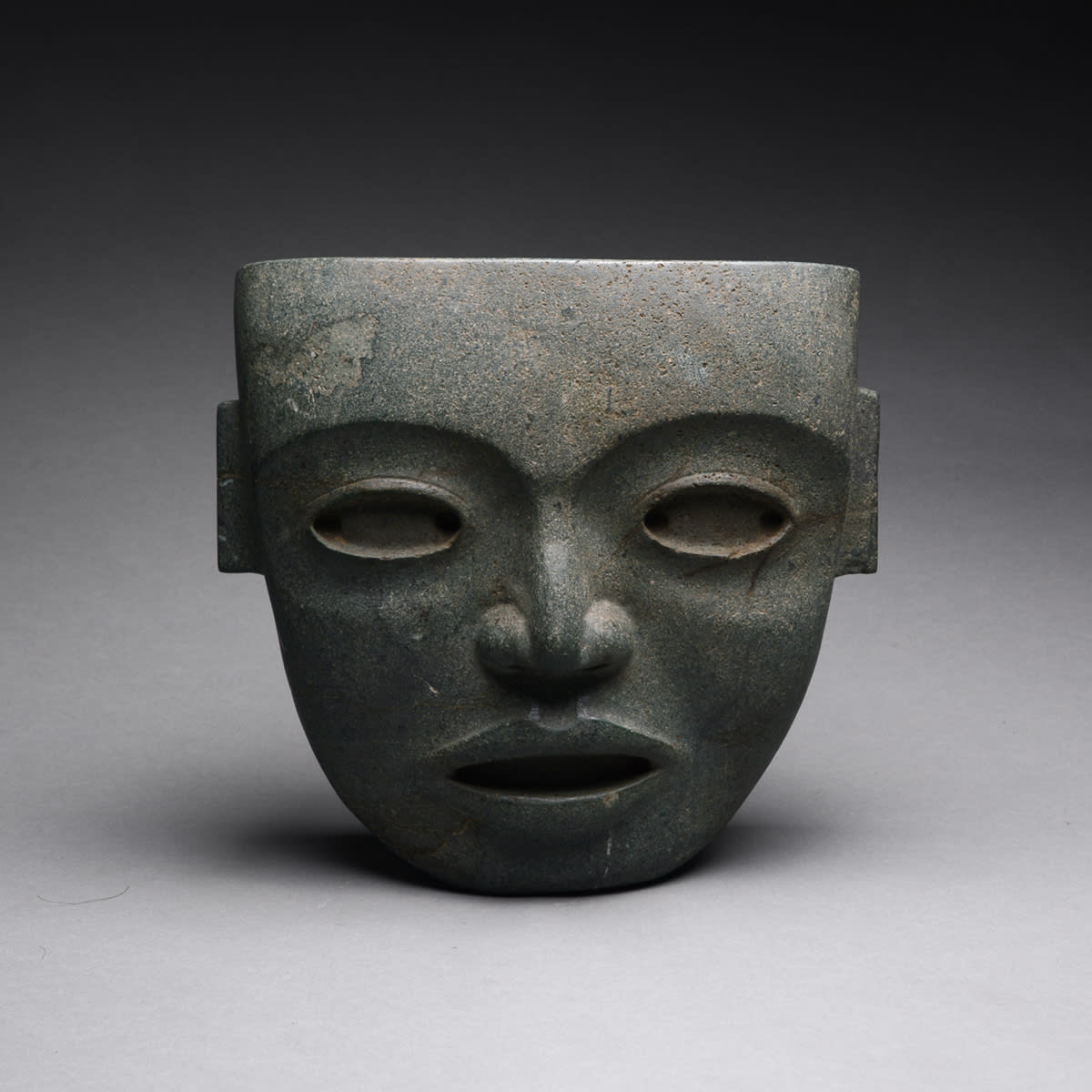Teotihuacan Green Stone Mask, 200 AD to 600 AD
Green Stone
21.6 x 22.9 cm
8 1/2 x 9 in
8 1/2 x 9 in
PH.0290
Further images
Teotihuacan is an ancient city in Mexico that is often referred to as the City of the Gods. By 600 A.D. it was the sixth largest city in the world....
Teotihuacan is an ancient city in Mexico that is often referred to as the City of the Gods. By 600 A.D. it was the sixth largest city in the world. It became a large urban center for people coming from all over Mesoamerica and is also famous for its sacred architecture. Although the great civilization of Teotihuacan met its untimely end around 700 A.D. by the hand of invaders, the creative spirit of the people lives on in their enduring artist creations and spectacular ruins.
Much of the art that arose during this period are stone masks and figures that are simplistic such as this one. Mystery surrounds these masks, as they are believed to have been part of funerary furniture, yet none have been found in burial chambers. Rather, they have been discovered near temples and complexes aligning the Street of the Dead. Scholars speculate they were attached to wooden armatures in temples to represent deities who are in the process of becoming gods—hence the drill holes that are commonly present in these masks. They may also have been worn on the arm as an insignia of an important person.
This piece is an exquisite example of Teotihuacan stone masks, with features such as sunken eyes, defined eyebrows, rectangular ears and an open mouth. Each mask presents a slightly different face from the next, making each unique and distinguishable. The impressive quality and craftsmanship of this mask is evident and is characteristic of the Teotihuacan stone mask tradition.
Much of the art that arose during this period are stone masks and figures that are simplistic such as this one. Mystery surrounds these masks, as they are believed to have been part of funerary furniture, yet none have been found in burial chambers. Rather, they have been discovered near temples and complexes aligning the Street of the Dead. Scholars speculate they were attached to wooden armatures in temples to represent deities who are in the process of becoming gods—hence the drill holes that are commonly present in these masks. They may also have been worn on the arm as an insignia of an important person.
This piece is an exquisite example of Teotihuacan stone masks, with features such as sunken eyes, defined eyebrows, rectangular ears and an open mouth. Each mask presents a slightly different face from the next, making each unique and distinguishable. The impressive quality and craftsmanship of this mask is evident and is characteristic of the Teotihuacan stone mask tradition.





